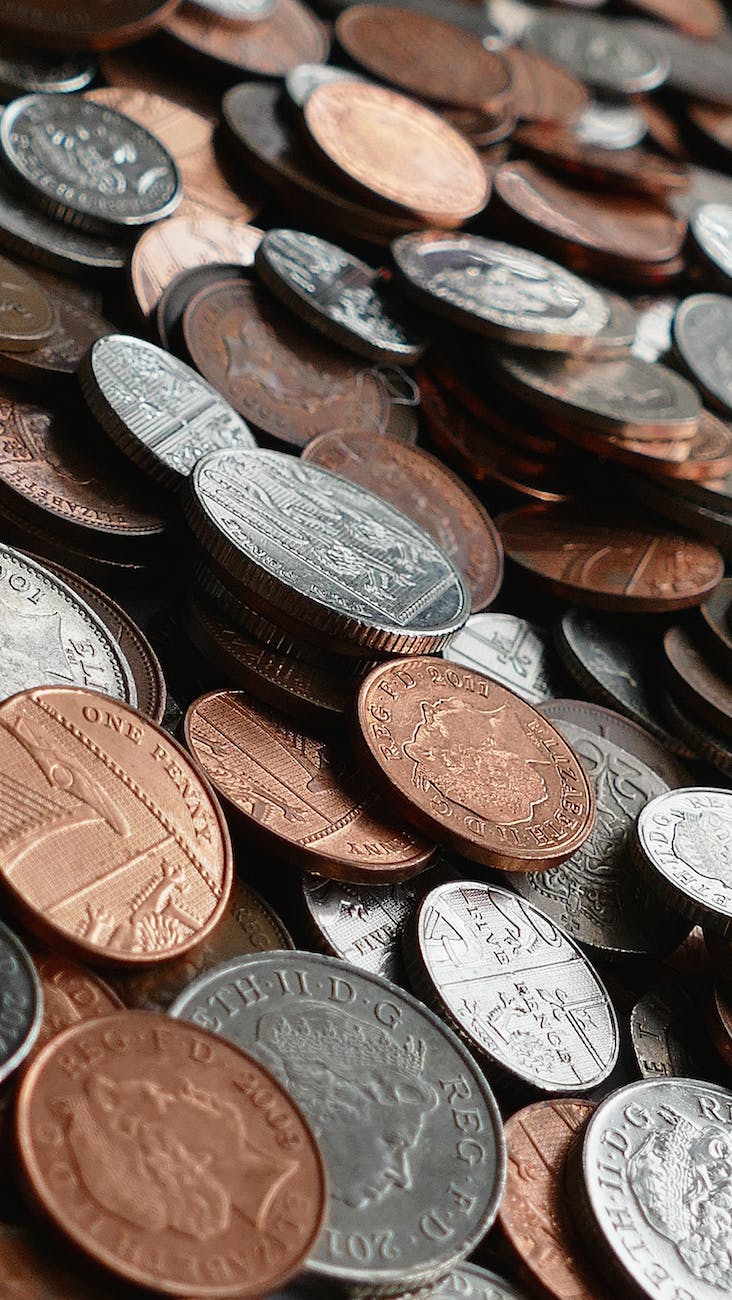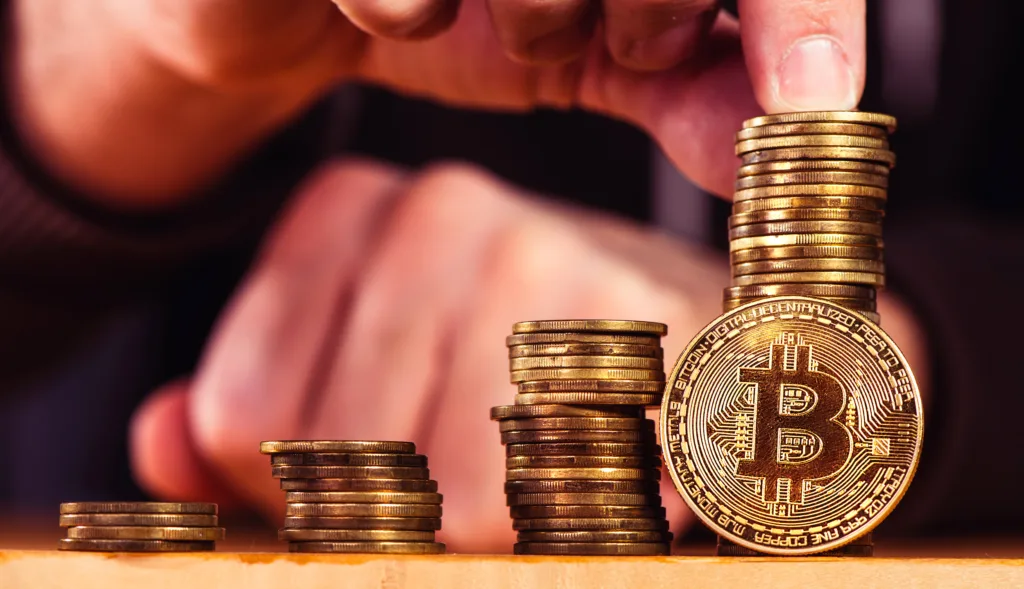Hello there, financial explorers! Sofi Abdurahman here, ready to whisk you away on an exciting journey through time and money – all the way from the ancient salt bars of Ethiopia to the digital frontiers of Bitcoin. Are you buckled up? Good! In the vast landscape of finance, nothing has been quite as revolutionary or as bewildering as cryptocurrency. But to understand where we’re going, we must first understand where we’ve been. So, let’s turn the dial of our time machine back a few thousand years, to a time when the humble salt bar, yes, salt, was the bitcoin of the day.
The Salty Beginnings

Salt, the white gold of yesteryears, was an essential commodity in ancient times. In Ethiopia, and many parts of Africa, it wasn’t just a seasoning for our delicious Doro Wat (chicken stew); it was a bona fide currency! In the Afar region of Ethiopia, bars of salt – known as ‘Amole tchew’ – were cut from the heart of the vast salt pans and used as a medium of exchange. Sounds wild, right? But if you think about it, this humble salt bar had the key elements of a successful currency.
Just like Bitcoin, salt bars were limited in supply, thereby providing them with intrinsic value. Furthermore, salt bars were fungible, each piece holding the same value as the next, similar to how one Bitcoin is equivalent to another. Moreover, they were portable – okay, maybe not as portable as a digital wallet, but you get the idea. The usage of salt bars showcases the first form of decentralization in currency, a concept that is at the very heart of cryptocurrencies today.
By taking this journey through monetary history, we can begin to understand the appeal of Bitcoin and other cryptocurrencies. They’re not just fanciful digital constructs but part of an ongoing evolution of what we perceive as ‘valuable’ and how we trade that value. From salt bars to shiny coins, paper money to digital wallets, the story of currency is one of constant change and adaptation.
But don’t get too salty about the past; our journey is just beginning. Join me in the next section as we leap forward in time to the creation of the coin…
The Age of Coins – Shiny Discs of Progress

Navigating through our financial time machine, we leave the saline deserts of Ethiopia behind and find ourselves amidst the clinking of precious metals in ancient Lydia, now a part of modern-day Turkey. Here, around 600 BC, humanity was introduced to a financial innovation that would be used for millennia – coins.
Coins were more than just shiny trinkets; they were the manifestation of an evolving economic system. Made primarily from gold and silver, they offered uniformity, portability, and divisibility. Coins carried a distinct advantage over our old friend the salt bar: each coin was minted with the insignia of the ruling power, significantly reducing the risk of counterfeiting.
Imagine, instead of strapping a heavy bar of salt to your camel, you could now trade several neatly minted coins – a convenience that seems quite commonplace to us but was revolutionary at the time. This shift from commodity money like salt bars to coinage stimulated trade and laid the foundation for sophisticated economies.
As empires grew and global trade expanded, so did the use of coins. The ancient Greeks were famous for their drachma, beautiful silver coins adorned with intricate designs. The mighty Roman Empire introduced the denarius, which was widely used in trade throughout the Mediterranean for centuries.
Across the globe, from the Indian subcontinent’s gold dinars and silver dirhams to China’s bronze and copper coins, the concept of coinage was embraced universally. Each coin, with its unique inscriptions and symbols, was a reflection of the culture, politics, and economic strength of its issuing authority.
While coins significantly advanced trade and commerce, they weren’t without their pitfalls. The history of coins is also a tale of economic manipulation and fraud. ‘Debasement’, for instance, was a common practice where rulers reduced the metal content of coins, usually during times of economic crisis or war, to increase the money supply.
Another common problem was ‘shaving’ or ‘clipping’, where people would cut off small amounts from the edges of coins. Accumulated shavings could be melted down and sold, or even used to mint new coins. Over time, this led to considerable inflation and economic instability, forcing authorities to come up with solutions like milling or ridging the edges of coins (just look at the edges of your quarters or dimes!).
Despite their challenges, coins served as the backbone of local and global economies for centuries. But as societies evolved and economies became more complex, so did our concept of money. Stay with me, dear readers, as we venture into the world of paper money, where value became even lighter and more abstract.
Paper Money – Make It Rain

With our next leap through time, we arrive in the bustling markets of Tang Dynasty China around the 7th century AD, where the world witnessed another transformative moment in monetary history – the birth of paper money.
Just imagine the scene: traders weary of carrying hefty coins around started using paper bills, known as ‘jiaozi’, as IOUs for coin deposits. This form of lightweight, portable money quickly gained popularity and officially received the imperial seal of approval in the 11th century under the Song Dynasty.
Paper money was a game-changer. Here was a medium of exchange so light that it could flutter in the breeze, yet it commanded value equivalent to a purse full of coins. And this innovation didn’t stay put in the Middle Kingdom; it began a journey along the Silk Road, where traders, explorers, and conquerors introduced it to the rest of the world.
Jumping a few centuries ahead, we find the concept of paper money being adopted and adapted by different cultures and economies. In the 17th century, the European colonial powers began issuing paper money as a way to fund their overseas endeavors.
Across the Atlantic, the nascent United States of America introduced the Continental Currency to finance the Revolutionary War. While this early form of paper money was plagued by rapid devaluation and was eventually replaced by the US dollar, it showcased the critical role of paper money in shaping national economies.
Paper Troubles: Inflation, Counterfeiting, and Trust
However, like its predecessor coinage, paper money came with its share of problems. Its value was tied to the promise that it could be exchanged for a certain amount of gold or silver, but what happened when that promise was broken? In times of economic crisis, governments would often print more money without increasing their gold reserves, leading to rampant inflation.
Counterfeiting, too, was a significant issue. With the advent of advanced printing technology, creating convincing fake bills became easier, causing a strain on economies and shaking public trust in the monetary system.
Even with these challenges, the sheer convenience and adaptability of paper money helped it gain supremacy over coins. But the journey of money didn’t stop here. As technology and economies advanced further, new forms of money began to take shape, bringing us to the dawn of the modern financial era.
Fiat Money and The Rise of the Dollar
As we journey into the 20th century, our financial chronicle takes a critical turn. Until this point, most of the world’s money was tied to something tangible, like gold or silver. This was known as the Gold Standard, where the value of a country’s currency was directly linked to a specific amount of gold. However, as economic complexities increased, this standard began to crumble, leading to the rise of fiat money.

Fiat money is a type of currency that isn’t backed by a physical commodity but instead gets its value from government regulation or law. The word “fiat” comes from the Latin term which means “let it be done.” Essentially, if a government says its colorful paper money has value, then it does!
Our journey now brings us to a sleepy New Hampshire town in the USA, Bretton Woods, where in 1944, delegates from 44 countries gathered. The result of this conference was the Bretton Woods Agreement, which led to the establishment of the International Monetary Fund (IMF) and the World Bank.
But perhaps the most profound impact was the establishment of the US dollar as the world’s primary reserve currency. Each member country agreed to peg its currency to the US dollar, which was, in turn, convertible to gold at a fixed rate. This new system represented a hybrid of the old gold standard and the upcoming era of fiat currency.
While the Bretton Woods system eventually dissolved in the 1970s (as the US couldn’t keep up with the world’s demand for dollars), it solidified the role of the US dollar as the global currency of choice, a status it still enjoys today.
Now, imagine a world where transactions are increasingly conducted electronically and the physical nature of money starts to lose relevance. That’s where our journey is headed next – to the dawn of digital money and the eventual birth of Bitcoin.
The Dawn of Digital Money
With a blink of our time-traveling eye, we find ourselves in the late 20th and early 21st century – a time characterized by rapid technological advancements and the dawn of the Information Age. Money, just like everything else, started adapting to this digital transformation.
Banks began maintaining digital ledgers, and soon plastic cards and electronic transfers began replacing physical cash. Money was no longer something you could touch or feel; it was becoming a series of ones and zeroes stored in a computer server. This shift towards digital currency was revolutionary, transforming how we transact, save, and think about money.
Imagine paying for your coffee with a quick tap of a card, or transferring funds across the globe with a few clicks. The internet started shrinking the world, and digital money made it spin faster. Yet, even though the form of money was changing, it was still tied to centralized institutions like banks or government authorities.
Bitcoin and Cryptocurrency
Our journey through the history of money now brings us to the tumultuous year of 2008. As financial markets were reeling from the global economic crisis, a whitepaper titled “Bitcoin: A Peer-to-Peer Electronic Cash System” was published by an anonymous person (or group) known as Satoshi Nakamoto.
Bitcoin, the first successful cryptocurrency, proposed a radical new concept: a decentralized, peer-to-peer electronic cash system, completely independent of governments or banks. Cryptocurrencies are essentially digital or virtual currencies that use cryptography for security. Unlike fiat currencies, they aren’t controlled by any central authority.

In this sense, cryptocurrencies echo the original ethos of the humble salt bar and the gold coin – a currency with an intrinsic value that isn’t regulated by any central body. Yet, they go a step further by harnessing the power of technology to ensure security, transparency, and, above all, decentralization.
Just as the introduction of coins and paper money revolutionized economies of their time, the advent of Bitcoin and subsequent cryptocurrencies represent a new frontier in our financial journey. But how does this new form of currency work? How secure is it? And what role does it have in our financial futures?
Let’s dive into the heart of cryptocurrencies – the blockchain. Imagine a ledger (the old-school accountant’s kind) that records every transaction ever made with a particular cryptocurrency. Now, instead of this ledger sitting in a bank or a single server, imagine that it’s distributed across thousands of computers worldwide. This is the essence of blockchain technology.
In a blockchain, every transaction is grouped together in a ‘block’ and then added to a long ‘chain’ of previous transactions. This structure is transparent, as any person can view the transaction history, and secure, as changing information within a block requires a majority of the system’s participants to agree.
The process of verifying transactions and adding them to the blockchain is done by “miners”. Miners are nodes in the network that use computational power to solve complex mathematical problems – a process which, in the case of Bitcoin and many other cryptocurrencies, also creates new units of the cryptocurrency.
This system removes the need for a central authority (like a bank or government), making cryptocurrencies potentially resistant to censorship and corruption. However, the technical complexity and potential for misuse have also drawn criticism and caution from users and regulators alike.
We find ourselves staring at a horizon that is simultaneously exciting and uncharted. Cryptocurrencies and digital currencies have the potential to revolutionize finance, enabling fast, secure transactions regardless of national boundaries and traditional banking systems.
But as with any frontier, there’s an element of uncertainty. Will governments embrace cryptocurrencies, or will regulation hinder their growth? Can cryptocurrencies overcome challenges related to security, scalability, and environmental impact? And perhaps most importantly, will society accept them as a new norm?
Star Trek Economics – Moneyless Utopia or Sci-fi Fantasy?
As we surf the waves of time and speculation, we crash onto the shores of a future that challenges our very understanding of money. In the realm of science fiction, shows like Star Trek present us with a fascinating, yet paradoxical, concept: a moneyless economy.

In the Star Trek universe, humanity has mastered technology to such an extent that all basic needs are easily met. Replicators can materialize anything from a succulent rack of lamb to a Beethoven symphony’s sheet music, all at the push of a button. With such abundance, the need for money as we know it evaporates.
This Star Trek economy, often likened to ‘automated luxury space communism’, operates on the principle of providing for everyone’s needs and allowing individuals to pursue their interests and ambitions without worrying about survival. There’s no poverty, no class struggle, no economic inequality. Work is no longer a means to earn a living but a path to personal development and societal contribution.
While it’s exhilarating to imagine such a future, transitioning from our current economic system to a moneyless one is a gargantuan leap. It presumes an infinite abundance of resources and an altruistic society where individuals work for personal fulfillment and communal progress rather than monetary gain.
Furthermore, this kind of system might not foster competition and innovation to the same degree. If all needs are met and there’s no financial incentive, would individuals still be driven to innovate, create, and push the boundaries of their fields?
Universal Basic Income and Beyond
While a fully moneyless economy may seem far-fetched, elements of its underlying principles are being discussed and experimented with today. Concepts like Universal Basic Income (UBI), where every citizen receives a set amount of money regularly, no strings attached, are gaining traction. It’s a way of ensuring that everyone’s basic needs are met, thus reducing poverty and income inequality.
Automation, too, is transforming our economy. From manufacturing lines to customer service, machines and software are increasingly taking over tasks once performed by humans. If this trend continues, we might find ourselves in a world where human labor is less and less necessary for production.
What would that world look like? How would we structure our economies and societies if survival no longer hinged on paid work? These are questions we’ll need to grapple with as technology continues to advance.
The idea of a Star Trek-like economy forces us to reconsider our relationship with work, value, and money itself. While it may seem like a utopian dream, it serves as a fascinating thought experiment. It underscores the fluidity of the concept of money, prompting us to envision bold, alternative futures.
Whether or not we’ll navigate towards a moneyless society or continue to adapt our age-old system of trade and currency, only time will tell. But remember, dear readers, “to boldly go where no one has gone before” – may that be our mantra as we continue exploring the intriguing universe of finance.
While the jury is still out on these questions, one thing is clear. Money, a concept as old as civilization itself, has continually evolved to meet the needs of the societies it serves. From humble salt bars to jingling coins, from lightweight paper notes to the ethereal digits of cryptocurrency, our perception and use of money have transformed over millennia.
And as always, Melkam Bunna! May your financial journey be as satisfying and invigorating as a good cup of Ethiopian coffee!


